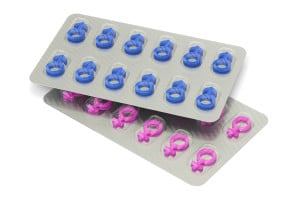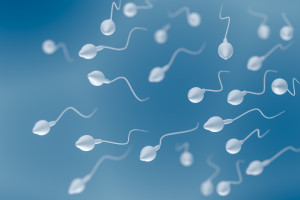What is Libido?

Libido is defined as a person’s overall sex drive or desire for sexual activity. Loss of libido, also known as a reduced sex drive, is a common problem that affects both men and women at one point or the other in their life.
It has been noted that with advancing age, there is an increase in the complaints of a lack of libido in women and erectile dysfunction in men. That said, a lack of libido and erectile dysfunction is not an inevitable part of ageing.
In order to assess how to increase one’s libido, it is important to understand how the body functions and affects one’s sex drive, what, if any, other factors affect our sex drive and could consequently cause a decrease in our libido and ultimately, what we can do to increase our sex drive.
By tradition, testosterone and oestrogen are said to be male and female sex hormones, respectively. This leads to the first question: what are these hormones, how are they produced, what are their functions, and do they affect our sex drive?
Androgens
Androgen is a general term for any natural or synthetic compound that primarily influences the growth and development of the male reproductive system, including the activity of the accessory male sex organs and development of male secondary sex characteristics.
Testosterone is the predominant and most important androgen that not only affects the male reproductive system but also influences the activity of many other organs.
Other androgens include androstenedione, 5α-dihydrotestosterone (DHT), which is produced from testosterone by the enzyme 5α-reductase, dehydroepiandrosterone (DHEA), DHEA sulfate (DHEA-S), and synthetic androgens in their many steroid ester variations (e.g., testosterone cypionate, decanoate, undecanoate, enanthate, propionate, heptylate, caproate, phenylpropionate, isocaproate, and acetate).
Just like testosterone, DHT is also very important in male development. DHT in embryonic development causes differentiation of the penis, scrotum, prostate, and their maturation during puberty and maintenance during adult life.
In the later stages of life, DHT contributes to male balding, prostate growth, and sebaceous gland activity. DHT is more biologically active than testosterone as it binds to the androgen receptor with a 15-fold greater affinity than testosterone but circulates at a significantly lower level than testosterone. DHT may be considered a hormone with mainly paracrine/autocrine actions in the reproductive target tissues, not being directly secreted into the bloodstream. Thus, testosterone is the most common sex steroid in the circulation of men.
Androgen receptors (AR) are widely distributed in several cells/tissues, including vascular smooth muscle cells and endothelial cells. The activation of AR may vary depending on whether naturally produced or commercially available hormones are being used, as well as whether metabolic products of androgens are being generated [e.g., testosterone is metabolized by 5α-reductase to the more potent AR ligand, DHT; alternatively, testosterone is metabolized by CYP19A1 to the primary form of oestrogen, 17β-oestradiol]. The effects of AR activation also may vary depending on whether androgen effects are tested in tissues or cells derived from males or females, or whether an underlying disease is present.
Testosterone
Testosterone plays a major role in the development of male reproductive tissues and is found in mammals, reptiles, birds, and other vertebrates. In men, testosterone promotes secondary sexual characteristics like increased muscle mass, bone mass, and the growth of body hair.
More than 95% of testosterone is produced by the testes in males and secreted by the Leydig cells (interstitial cells of the testes) in response to luteinizing hormone (LH) produced by the pituitary gland after a series of enzymatic reactions using the cholesterol molecule. Small amounts of testosterone are also secreted by the zona reticularis of the adrenal glands.
Whilst adult human males produce about 10 times more testosterone than adult females, females are very sensitive to the hormone too. In women, the thecal cells of the ovaries synthesize testosterone, as does the placenta and the adrenal cortex.
Although approximately 7% of testosterone is reduced to DHT by the cytochrome P-450 enzyme, 5α-reductase (an enzyme highly expressed in male accessory sex organs and hair follicles) in men, small amounts (around 0.5%) are converted into oestradiol by aromatase (CYP19A1, an enzyme expressed in the brain, liver, adipose, and cardiovascular tissues).
Decreased production of testosterone by the testes in men is categorized as hypogonadism. This can be classified as either primary, secondary, or mixed. Primary hypogonadism is the failure of the testes to produce enough testosterone, whilst secondary hypogonadism is caused by a decrease in the production of luteinizing hormone. Hypogonadism may also be classified based on the timing of onset (i.e., pre- or post-pubertal).
Testosterone levels begin to decline around 40 years of age. By 80 years of age, more than 50% of men will have testosterone levels in the low range (using a reference range defined by nonobese, healthy men younger than 40 years of age).
In women, testosterone is produced by the ovaries and adrenal glands, and by conversion of proandrogens in peripheral tissues. Levels decrease gradually starting in the 20s or 30s. There is no abrupt decrease during menopause, except for surgical menopause. Testosterone is also converted to oestrogen by aromatases in many tissues; thus, testosterone is an important source of oestrogen in postmenopausal women.
The role of sex hormones in sexual desires
In men
Oestradiol, the predominant form of oestrogen, plays a key role in male sexual function too. Oestradiol in men is essential for controlling libido, erectile function, and spermatogenesis.
Oestrogen receptors, as well as aromatase, the enzyme which converts testosterone to oestrogen, are abundant in the brain, penis, and testis, organs important for sexual function.
In the brain, oestradiol synthesis is increased in areas related to sexual arousal.
In men, in addition to the brain, in the penis, oestrogen receptors are found throughout the corpus cavernosum with a high concentration around neurovascular bundles.
The effect of oestradiol on libido is seen at various levels of regulation that starts with direct effects in the brain. Areas of the brain that control sexual behaviour in mammals are thought to do so via pheromones that induce specific sexual effects on the autonomic nervous system. These effects include changes in mood and sexual arousal. Pheromones produce increased activity in the medial preoptic area/anterior hypothalamus.
In women
Oestrogen receptors are present in the vagina, vestibule of the vulva, urethra and trigone of the bladder, and on autonomic and sensory neurons in the vagina and vulva. The highest concentration of oestrogen receptors is in the vagina, with the oestrogen receptor alpha almost solely active post menopause.
Testosterone receptors are concentrated mainly in the vulval tissues and less in the vagina, whereas progesterone receptors are found only in the vagina and at the vulvo-vaginal epithelial junction.
Causes of decreased or complete loss of libido
A decrease in one’s libido has often been linked to problems in a relationship, stress or tiredness. It can also be a sign of an underlying medical problem, such as reduced hormone levels.
As we are all different, everyone’s sex drive is different, thus, there is no such thing as a “normal” libido.
Hormonal
Low libido in males is associated with decreased testosterone levels.
Relationship problems
To assess whether your relationship is contributing to or is the main factor that is influencing your decreased libido or not, you should first ask yourself this question: “am I happy in my relationship?”
Then you should consider whether you have any doubts or worries about your relationship that could affect your loss of sexual desire.
Some ways a relationship can contribute to loss of libido include:
- Loss or lack of sexual attraction
- Unresolved conflicts and/or frequent arguments
- Overfamiliarity with a long-term partner
- Poor communication
- Lack of trust
- Physical sexual problem
Sexual problems
Physical sexual problems could contribute to a loss of sex drive. Physical sexual problems could be any of the following:
- Problems with ejaculation like premature ejaculation, delayed ejaculation and retrograde ejaculation
- Erectile Dysfunction
- Vaginal dryness
- Painful intercourse
- Inability to orgasm
- Involuntary tightening of the vagina (vaginismus)
Stress, Anxiety and Exhaustion
Stress, anxiety and exhaustion can take its toll on one’s body thereby having a major effect on the quality of one’s life, happiness and sex drive.
Thus, it is important that one assesses the cause of their tiredness and anxiousness.
Depression
Depression is different from being unhappy or sad for a short while. It is a serious illness that affects all aspects of one’s life including’s one’s sexual desire.
In addition to a decrease in or complete loss of sexual desire, depression can manifest itself in other ways that include:
- Extreme sadness that doesn’t go away
- Feeling low or hopeless
- Loss of interest or pleasure in the things that you used to enjoy
Getting older and menopause
The older one gets, the more one experiences a gradual decrease in sexual desire. That said, loss of libido is not an inevitable part of ageing. There can be a myriad of reasons for this and they include:
- falling levels of sex hormones (oestrogen and testosterone) just before, during and after the menopause in women
- falling levels of sex hormones (testosterone) in men
- age-related health problems, including mobility problems
- side effects of medication (the older we get, it is likely we take more medications)
Pregnancy, childbirth and breastfeeding
It is common for a woman to experience a loss of sexual desire during pregnancy, after childbirth and whilst breastfeeding.
This can be because of any of the following:
- changes in hormone levels
- changes to your body and issues with your body image
- exhaustion
- painful sex caused by an injury, such as a cut or tear, during childbirth
- changed priorities, such as focusing on looking after your baby
It is expected that these issues would improve over time.
Underlying medical conditions
Any long-term medical condition can affect your sex drive. This may be a result of the physical and emotional strain these conditions can cause, or it may be a side effect of treatment. For example, low libido can be associated with conditions like:
- heart disease
- diabetes
- an underactive thyroid – where the thyroid gland doesn’t produce enough hormones
- cancer
- major surgery – for example, surgery to remove the ovaries and womb in women
Medication and contraception
Certain medicines have been known to sometimes reduce libido as a side effect. Some of these medications include:
- medications for high blood pressure
- many types of antidepressant medications (for instance, selective serotonin reuptake inhibitors, SSRIs, are known to diminish libido)
- medications for fits (seizures), such as topiramate
- medications called antipsychotics, such as haloperidol
- medication for an enlarged prostate, such as finasteride
- medication for prostate cancer, such as cyproterone
- hormonal contraception, such as the combined hormonal contraception (pill, patch or ring), the progestogen-only pill, the contraceptive implant and the contraceptive injection
- 5-alpha reductase inhibitors – finasteride and dutasteride
Please note that the list above is not exhaustive.
Alcohol and drugs
Drinking excessive amounts of alcohol over a long period can reduce one’s sex drive, thus, it is a good idea not to drink too much.
Men and women are advised not to drink more than 14 alcohol units a week on a regular basis.
Sexual Interest/Arousal Disorder (SIAD) in women
According to the research by Julia Velten et al. in 2017 published in the PLos One journal, one of the most common sexual complaints in women is a lack of interest in sex.
A lack of interest in sex is defined in the 5th edition of the Diagnostic and Statistical Manual of Mental Disorders (DSM-5) as Sexual Interest/Arousal Disorder (SIAD). The diagnosis of this disorder requires at least three of the following: (a) a lack of interest in sex, (b) few/no sexual thoughts, (c) lack of receptivity to a partner’s sexual invitations and no initiation of sexual behaviour, (d) a lack of pleasure during sexual activity, (e) lack of responsive desires to erotic triggers, and (f) reduced physical signs of sexual arousal.
The need to increase sexual arousal during sexual activity may be particularly relevant for women with SIAD, as a significant number of these women have reported a lack of sexual excitement or reduced feelings of sexual arousal, even though they experience no difficulties in getting physically aroused.
Genitourinary syndrome of menopause
Genitourinary syndrome of menopause (GSM) is the new term for vulvo-vaginal atrophy (VVA). It is a more accurate and inclusive term that describes the multiple changes occurring in the external genitalia (including the vulva), pelvic floor tissues, bladder and urethra, and the sexual sequelae of loss of sexual function and libido, caused by hypoestrogenism during the menopause transition and post-menopause. These genitourinary changes primarily occur in response to reduced oestrogen levels and ageing and do not settle with time.
Oestrogen deficiency symptoms in the genitourinary tract are bothersome in more than 50% of women and have an adverse impact on the quality of life, social activity and sexual relationships. GSM is a chronic and progressive syndrome that is underdiagnosed and undertreated.
The loss of oestrogen causes anatomical and functional changes, leading to physical symptoms in all the genitourinary tissues. The tissues lose collagen and elastin; have altered smooth muscle cell function; have a reduction in the number of blood vessels and increased connective tissue, leading to thinning of the epithelium; diminished blood flow; and reduced elasticity. Thinning is also related to the change in the vaginal epithelial cells.
The symptoms of GSM are manifestations of the changes that occur during menopause and leads to complaints of vaginal dryness, loss of lubrication, dyspareunia, vaginal wall prolapse, vaginal bleeding and discharge. Vulval burning, dryness, irritation or itching, and entry dyspareunia with fissuring are some of the vulval symptoms. Urinary symptoms include recurrent urinary tract infections, urgency and urge incontinence, stress incontinence, dysuria, and voiding issues. There may be a loss of libido, dyspareunia on entry, within the vagina or deep in the pelvis, and sexual dysfunction of arousal and orgasm. Bleeding or spotting may occur during or after intercourse.
Dyspareunia is defined as difficult or painful sexual intercourse.
References
All links were accessed on the 12 – 17th of December 2018
- https://www.nhs.uk/conditions/loss-of-libido/
- https://www.nhs.uk/conditions/ejaculation-problems/
- Title – Interoception and sexual response in women with low sexual desire
- Authors – Julia Velten, Data curation, Formal analysis, Writing – original draft, Writing – review & editing and Lori A. Brotto, Conceptualization, Data curation, Funding acquisition, Investigation, Methodology, Project administration, Resources, Writing – original draft, Writing – review & editing, Gilles van Luijtelaar, Editor
- Source – PLoS One. 2017; 12(10): e0185979. Published online 2017 Oct 11. doi: [10.1371/journal.pone.0185979]
- Link – https://www.ncbi.nlm.nih.gov/pmc/articles/PMC5636106/
- Title – The role of estradiol in male reproductive function
- Authors – Michael Schulster, Aaron M Bernie, and Ranjith Ramasamy
- Source – Asian J Androl. 2016 May-Jun; 18(3): 435–440. Published online 2016 Feb 23. doi: [10.4103/1008-682X.173932]
- Link – https://www.ncbi.nlm.nih.gov/pmc/articles/PMC4854098/
- Title – Testosterone therapy in hypogonadal men: a systematic review and network meta-analysis
- Authors – Jesse Elliott, Shannon E Kelly, Adam C Millar, Joan Peterson, Li Chen, Amy Johnston, Ahmed Kotb, Becky Skidmore, Zemin Bai, Muhammad Mamdani, and George A Wells
- Source – BMJ Open. 2017; 7(11): e015284. Published online 2017 Nov 16. doi: [10.1136/bmjopen-2016-015284]
- Link – https://www.ncbi.nlm.nih.gov/pmc/articles/PMC5701987/
- Title – Adverse Effects and Safety of 5-alpha Reductase Inhibitors (Finasteride, Dutasteride): A Systematic Review.
- Authors – Hirshburg JM, Kelsey PA, Therrien CA, Gavino AC, Reichenberg JS
- Source – J Clin Aesthet Dermatol. 2016 Jul;9(7):56-62. Epub 2016 Jul 1.
- Link – https://www.ncbi.nlm.nih.gov/pubmed/27672412
- Title – Genitourinary syndrome of menopause
- Authors – Elizabeth Farrell AM
- Source – Volume 46, No.7, 2017 Pages 481-484
- Link – https://www.racgp.org.au/afp/2017/july/genitourinary-syndrome-of-menopause/
- Title – Benefits and risks of testosterone treatment for hypoactive sexual desire disorder in women: a critical review of studies published in the decades preceding and succeeding the advent of phosphodiesterase type 5 inhibitors
- Authors – Sandra Léa Bonfim Reis and Carmita H. N. Abdo
- Source – Clinics (Sao Paulo). 2014 Apr; 69(4): 294–303. doi: [10.6061/clinics/2014(04)11]
- Link – https://www.ncbi.nlm.nih.gov/pmc/articles/PMC3971358/
- Title – Reactive oxygen species: players in the cardiovascular effects of testosterone
- Authors – Rita C. Tostes, corresponding author, Fernando S. Carneiro, Maria Helena C. Carvalho, and Jane F. Reckelhoff
- Source – Am J Physiol Regul Integr Comp Physiol. 2016 Jan 1; 310(1): R1–R14. Published online 2015 Nov 4. doi: [10.1152/ajpregu.00392.2014]
- Link – https://www.ncbi.nlm.nih.gov/pmc/articles/PMC4796634/
- Title – Testosterone Therapy: Review of Clinical Applications
- Authors – RYAN C. PETERING, MD, and NATHAN A. BROOKS, MD, MPH
- Source – Oregon Health and Science University, Portland, Oregon. Am Fam Physician. 2017 Oct 1;96(7):441-449.
- Link – https://www.aafp.org/afp/2017/1001/p441.html




